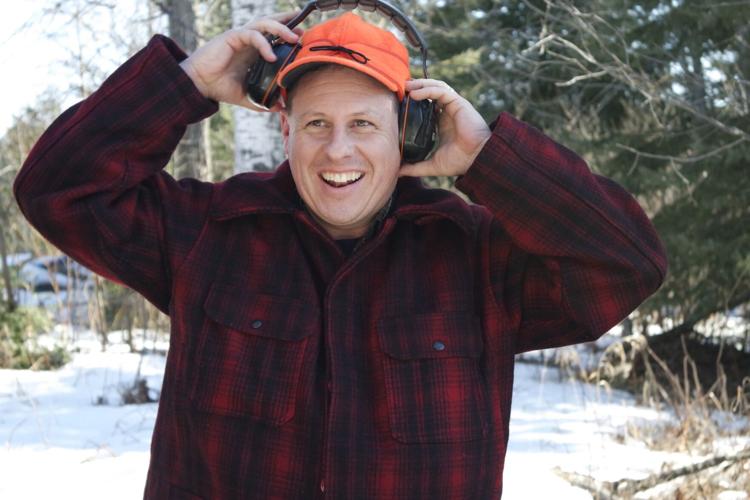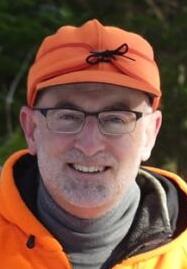As winter dwindles and spring hesitates to come out fully from behind the curtain, there’s a month that belongs to neither season or both seasons, depending on how you look at it.
It starts as early as late February and can stay as long as late April. It’s either not good for winter sports — ice fishing, skiing, snowshoeing, rabbit hunting — or it’s fine for those sports but you’re tired of doing them. Yet it’s not warm enough for good spring fishing. I used to dread this time of year, but amid the crusty snow, flashes of warm sunlight and shockingly unpredictable blizzards, I’ve come to enjoy this season between seasons because it’s really good for one thing — getting together with friends at a camp that’s been hibernating since deer season and shooting guns.
The idea grew with the ache in my heart years ago as I left hunting camp for the final weekend of the fall. Camp is such a fun place to be with family and friends. Why is it limited to a few weekends each fall? Why does it have to coincide with an established hunting season? Why not invent our own reason to be there? So ,we did, a group of friends from two different hunting camps — ours in Alpena and my brother-in-law’s in Levering. We called it Beer Camp, and we held the celebration each year sometime in March. It became a tradition, one that we all looked forward to, and one that you might steal and look forward to as well.
Our camp in Alpena is nothing special if you measure specialness in money and fixtures. It was purchased in 1968 by a mixed bag of teachers, car salesmen and telephone linemen, largely as a place to play cards. The original building was roughly 16-feet-by-32-feet with a big pot-bellied stove in the middle. A sheet separated the sleeping area from the card-playing area. The card table was crafted from a giant spool of telephone cable with felt-lined trays for poker chips. Back in the early ‘70s, if you entered the building and wanted to see and/or breathe, you needed to crouch to stay below the dense layer of cigarette smoke. The walls were made of a soft fiberboard which was manufactured right there in Alpena. We liked the walls because darts stuck in them and mice liked the walls because they were really easy to chew through. Used for both card playing and deer hunting, the camp was named “Buck Hustlers.”
The very first beer camp largely involved purging the Buck Hustlers of all the crap that members had dumped there over the years. We stacked all the rotting chairs, sofas and derelict scrap wood into a pile and created a bonfire so large that you couldn’t see the people standing on the other side. Then we had a snowball fight through the fire. If you get that, you get the essence of beer camp. And while Alpena’s Buck Hustlers and Levering’s Five Seasons have been blessings for hosting beer camps, (we alternated between the two, thereby having a home and visitor team) the same fun can be had using tents and campers.
There is order, decorum and tradition to follow in creating a good beer camp. First of all, you need guns. Lots of them in all shapes and sizes. And they never mixed with the beer. Our group knew how to safely handle firearms and took them seriously, even while having fun with our shooting competitions. There were many of them dreamed up by members of the group during commutes to work over a long winter. Spring-loaded targets were built, popping up from dense stands of spruce as competitors walked through a course and observers heckled from behind them. Wind chimes of welded steel hung from distant hillsides 300 yards from the shooting bench. Competency with rifles, handguns and shotguns was gathered, tabulated and rewarded with various white elephant gifts gathered from weird relatives at Christmas. Think plastic Viking helmet with horns as a crown for the reigning beer camp king, and you get the idea.
There also needs to be crafts such as building bottle openers from old rifle cartridges or butane stoves from pop cans or potato launches from pvc and bottles of Aqua Net hair spray. Crafts can be replaced or augmented by some work project such as hooking several members to telephone poles by a tow strap and dragging them down to the creek to build a bridge. Taking down large trees that overhang the cabin by using tractors, winches, pulleys and chainsaws are also fair game for a good project.
Truthfully, though, the food might be the star of the show, best divvied up and assigned to various members of the camp. It was at beer camp that I learned to marinate steaks in jalapeno peppers and then slice them into juicy, thin strips with just the perfect amount of heat. The trick at beer camp was not only to create the most delicious breakfast, snack or dessert, but to do it in a way that could be easily transported by sled into a snow-socked cabin or that required the least amount of cleanup considering the fact we had no running water.
Last, but not least, when the guns were put away for the afternoon and the smoked salmon, venison sausage, cheese and Gardetto cocktail hour started, there had to be a true Consumer Reports style paper cup blind taste test, the results of which were always fun and sometimes shocking. Year after year, we tried to come up with a new theme for the taste test. Best of the normal brews (Budweiser always won), best of the nastiest, cheapest beers we could find, best of the 40-ouncers in a paper bag, best of the craft brews, best of the IPAs and so on and so forth. To keep these taste tests on the up and up, members had pencils and score cards and the organizer would even scramble the order of their flight so what one person said about cup No. 1 couldn’t prime the thinking of others because their cup No. 1 was different.
Decorum and structure required a yearly group photo as well as candids that appeared on video slideshows with music. A history book and photo album recorded projects, food, taste test and shooting Olympics results. All of this may seem a little silly and a lot of work, but what else do you have to do when it’s too late to hunt deer and rabbits but too early to go fishing?


























